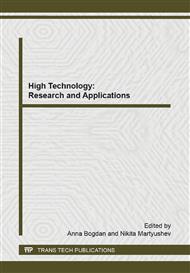[1]
J.M. Andu´jar, F. Segura, Fuel cells: History and updating. A walk along two centuries, Renewable and Sustainable Energy Reviews. 13 (2009) 2309-2322.
DOI: 10.1016/j.rser.2009.03.015
Google Scholar
[2]
M.C. Tucker, Progress in metal-supported solid oxide fuel cells: A review, Journal of Power Sources. 195 (2010) 4570-4582.
DOI: 10.1016/j.jpowsour.2010.02.035
Google Scholar
[3]
J. -J. Choi, J. -H. Lee, D. -S. Park, B. -D. Hahn, W. -H. Yoon, H. -T. Lin, Oxidation resistance coating of LSM and LSCF on SOFC metallic interconnects by the aerosol deposition process, J. Am. Ceram. Soc. V. 90, 6 (2007) 1926-(1929).
DOI: 10.1111/j.1551-2916.2007.01641.x
Google Scholar
[4]
H.J. Grabke, Oxidation of NiAl and FeAl, Intermetallics 7 (1999) 1153-1158.
DOI: 10.1016/s0966-9795(99)00037-0
Google Scholar
[5]
S.C. Deevi, V.K. Sikka, Nickel and iron aluminides an overview on properties, processing, and applications, Intermatellics 4 (1996) 357-375.
DOI: 10.1016/0966-9795(95)00056-9
Google Scholar
[6]
Z.A. Munir, Synthesis of high-temperature materials by self-propagating combustion methods, American ceramic society bulletin. V. 67, 2 (1988) 342-349.
Google Scholar
[7]
Nikolai Sochugov, Thorsteinn I. Sigfusson, A.A. Solovyev, A.I. Kirdyashkin, V.D. Kitler, А.S. Maznoy, Yurii Tyurin, Advanced Fuel Cell Development in Russia. Energy Procedia 29 (2012) 594-605.
DOI: 10.1016/j.egypro.2012.09.069
Google Scholar
[8]
A. Solov'ev, N. S. Sochugov, I. V. Ionov, A. I. Kirdyashkin, V. D. Kitler, A. S. Maznoi, Yu. M. Maksimov, T. I. Sigfusson, Synthesis and Investigation of Porous Ni–Al Substrates for solid-oxide fuel cells. Inorganic materials: applied research V. 4 5 (2013).
DOI: 10.1134/s2075113313050171
Google Scholar
[9]
T. Fukui, S. Ohara, M. Naito, K. Nogi, Performance and stability of SOFC anode fabricated from NiO–YSZ composite particles, Journal of Power Sources. 110 (2002) 91-95.
DOI: 10.1016/s0378-7753(02)00218-5
Google Scholar
[10]
H.X. Dong, Y.H. He, Y. Jiang, L. Wu, J. Zou, N.P. Xu, B.Y. Huang, C.T. Liu, Effect of Al content on porous Ni–Al alloys, Materials Science and Engineering A. 528 (2011) 4849–4855.
DOI: 10.1016/j.msea.2011.02.014
Google Scholar
[11]
A.S. Maznoy, A.I. Kirdyashkin, Yu.M. Maksimov, Methods for stereometrical analysis of porous penetrable materials morphology, Izvestiya Vuzov - Powder metallurgy and functional coatings. 3 (2011) 44-50. (In Russian).
Google Scholar


